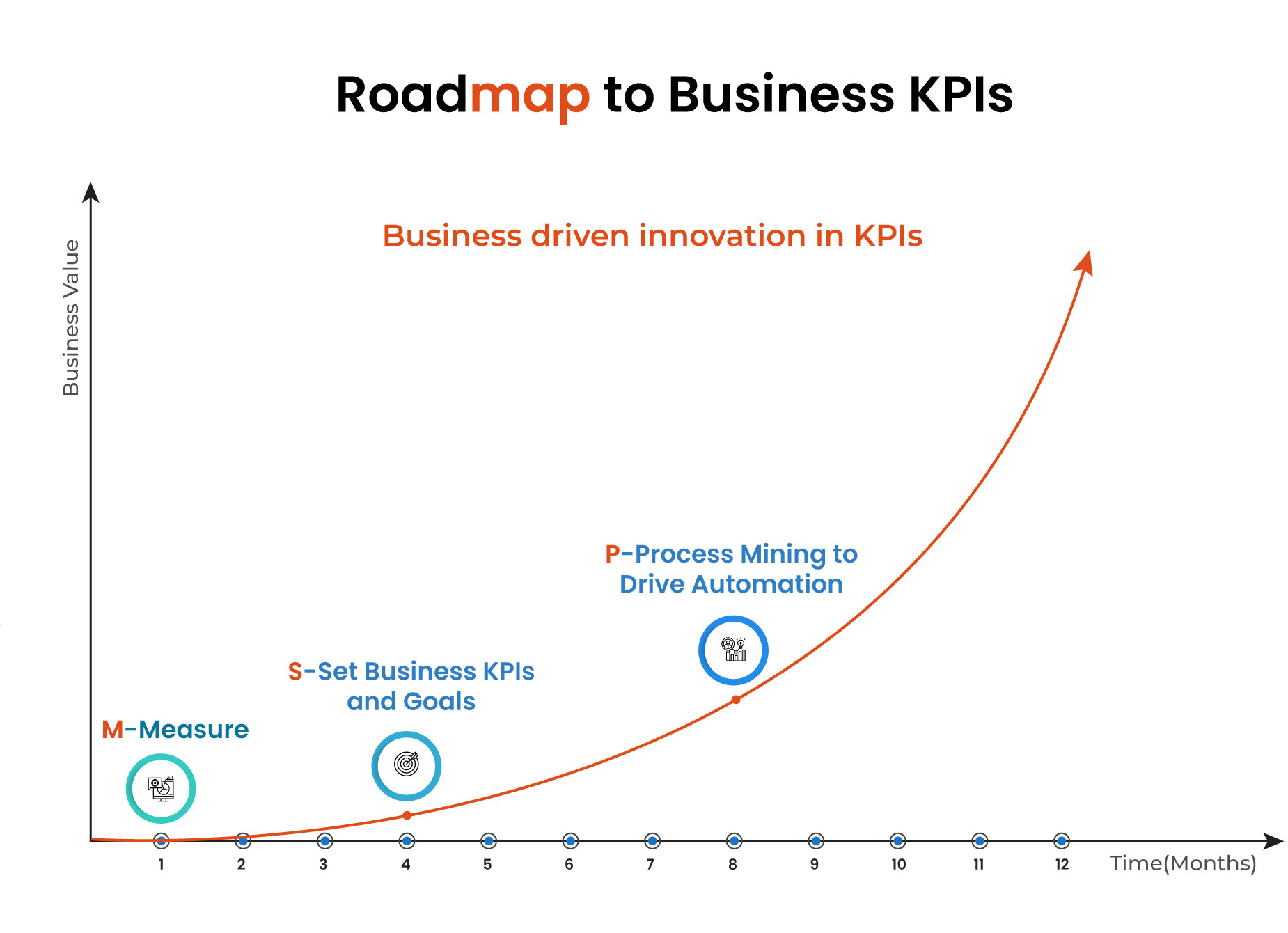The IT and Business Disconnect
What if, you could easily reconnect to business value which is driven by IT KPIs? With the footprint of IT/ Operations team, organizations may be able to develop KPIs which could directly impact business critical issues. And help justify investments in IT projects to CxO. But this is easier said than done.
Many of the IT driven KPI’s are disconnected from business requirements and higher-level management KPIs. In most of the cases it is considered as overhead for IT team to ensure lower cost, with little value delivered for business. As a result, many business managers see IT teams in silos.
KPIs are helpful to measure progress and track performance of a business. Usually, people inside IT department capture and manage these KPIs. But all these KPIs are based on operational aspects which doesn’t necessarily align with the business.
IT driven KPIs to manage business application are focused on SLAs, MTTR, Defect Density and innumerable jargons, that give an insight into IT operations and its maturity. But all these KPIs are based on operational aspects which doesn’t necessarily align with the business. Even after these stellar KPIs to show, business teams often don’t see IT teams providing value. As there are real business issues which are overlooked and shadowed behind these IT driven KPI.
Where Managed Service Providers Come In
As organizations mature their Journey from IT Service Management to Business Service Management, what KPIs will make sense? How can a managed service provider help here? Is it only through automation or through understanding business value of automation from a series of well thought-through approaches to drive results?
Within many organizations, service management is seen as a cost centre and not a business partner. Service providers need to develop new skills that include communicating the value of IT services using metrics; change management; collaborating with business stakeholders; and focusing on delivering on time and within budget.
In short, this article looks at how an IT organization can shift from focusing on Service Management KPI measurements to Business value driven KPIs. The goal of this article is to help develop a Service Provider approach to aligning IT activities with business-critical services.
A mature Service Provider can help IT organizations take the front seat and partner with business teams, where IT is measured based on business outcomes, they bring in. As a result, they become partners with businesses, rather than just being a cost canter.
Let’s say as an IT leader you present the IT team performance to the finance team as below:
- Mean handling time of their department tickets raised to IT is reduced from 4 hours to 2 hours in the last quarter
- SLA adherence to response and resolution SLA improved from 85% adherence to 95%
- Mean backlog age is reduced from 8 days to 3 days
And so on …
However, finance departments still have business issues that require attention, such as:
- Closing Cycle is too long, it takes them approximately 7-10 days to close the books after the month is over
- Days sell outstanding is close to 60 days (for a Net30 payment term) and many more real business issues …
Can you see the disconnect? Don’t take me wrong, it’s important to have healthy operational KPIs to better drive results from the IT technicians/support analysts to help business resolve issues faster, however that alone is not sufficient. Many a times, the problem lies in finding real process bottlenecks, which is probably hidden between manual processes, cumbersome multiple steps to complete a business process and more.
We are used to measuring and controlling processes in IT, but goal is to create business value, not just improve process reporting. To enable business value driven operations, we need a new kind of approach, one that moves beyond operational metrics and towards establishing meaningful relationships between departments and their customers. The goal here is to use the power of technology to enable teams to move from reactive to proactive - caring not just about Steller IT KPIs but about how it helps them achieve their business or department goals.
How can we mature an IT operation which is more focused on driving results through Business KPIs?
Here we follow the three-pronged methodology “MAP” Measure-Assess-Process

Step 1
Measure
Utilize an accurate system to drive IT KPIs. The objective is not only to drive better information for your organization, but also to be able to detect where things are going wrong so you can correct them before they become big problems.
Step 2
Assess Business KPIs and Goals
Understand your own goals. Are you servicing finance department, HR department, production department etc.? If yes, then step 2 is easier. If no, then you need to re-evaluate where your attention is going. Maybe it's spending more time nurturing what you do best. Maybe it's finding ways to improve efficiency to serve more customers or within your organization.
Step 3
Process Insights to Drive Automation
There’s a lot of data you can collect to help you see trends in how your team is working and how the business is running. IT operations should have a process management system which is used to create, manage, and share process notes. This will allow you to see patterns in your team's workflow as well as identify areas for improvement. You can also create dashboards that allows you to see real-time indicators of processes and resources utilised by your team. In addition, processes can be visualised using different tools which allow you to create custom process maps, workflows etc.
Conclusion:
Business value is a critical metric for understanding the technology investment decisions being made today. Many IT managers focus solely on application performance because that is what their organization’s staffing and budget constraints demand. But business value transcends application performance. Every business has unique goals and requirements, and each must be served by an appropriate technology stack. Thus, business value does not necessarily mean better performance or functionality for every task. Rather it means understanding how an implementation of technology impacts your business.
Build your capability by partnering with an experienced managed service provider who can design a strategy covering all the dimensions. Results can be endless if service providers will incorporate these steps in their service delivery, and really can partner with business teams on transformation.













